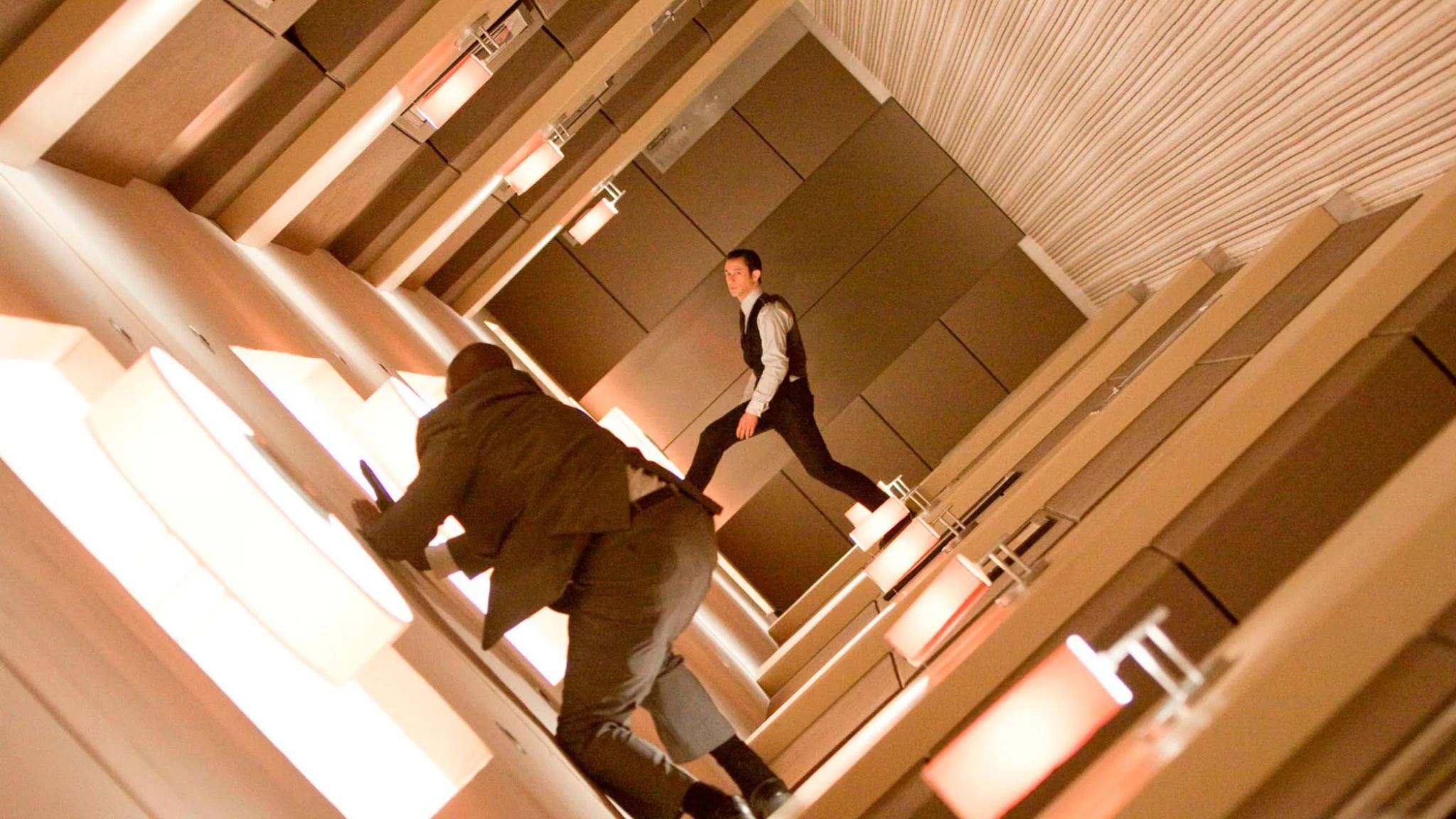
Christopher Nolan’s movie “Inception” continues to stand out as a milestone of 21st-century cinema, blending intricate science fiction with the smooth structure of a crime caper. The film’s tale of dream burglars navigating various levels of the unconscious mind is lauded for its intricate plot and striking visuals, including collapsing Paris landscapes and a decaying seaside limbo. Despite its impressive digital effects and thought-provoking themes, the most breathtaking scene in the entire movie remains the intense fight in a rotating hotel hallway. This scene, where Joseph Gordon-Levitt’s character Arthur battles illusions in a spinning corridor, still seems like a victory of modern special effects more than ten years after the release of “Inception”.
Nolan’s professional journey is marked by his unwavering devotion to physical effects, an approach that values real-life illusions over digital manipulations when feasible. This devotion is what makes the hallway brawl in Inception particularly awe-inspiring. To generate the illusion of weightless combat within a setting that rotates, Nolan and his team constructed a revolving set entirely. The hotel corridor, spanning more than 100 feet, was assembled inside a massive steel centrifuge designed to rotate 360 degrees. Gordon-Levitt, together with the stunt performers, spent weeks practicing a finely orchestrated fight sequence which they had to execute while the entire environment spun upside down around them.
The outcome presents a series that carries a tangible feeling of heaviness and confusion. Each impact against a wall and every fall feels authentic because it is genuine, demonstrating the raw strength of traditional filmmaking skills. Interestingly, this breathtaking cinematic scene was created using an extensive practical effect, a technique with origins dating back more than six decades.
Inception Borrowed a Trick From a Sci-Fi Masterpiece
The fundamental idea behind the rotating sets in the movie “Inception” was significantly influenced by one of director Christopher Nolan’s cinematic idols, Stanley Kubrick, and his 1968 masterpiece, “2001: A Space Odyssey”. Kubrick’s film redefined science fiction by meticulously adhering to scientific realism, particularly in how a spaceship could create artificial gravity. The innovative method was the Discovery One’s colossal centrifuge, a rotating, wheel-shaped living space that used centrifugal force to mimic gravity for the crew. To achieve this, Kubrick’s team constructed an enormous, 38-foot-diameter rotating set, which represented a substantial portion of the film’s budget.
In a memorable scene from the movie, character Frank Poole (played by Gary Lockwood) is shown jogging around the interior of a rotating device that simulates gravity, effortlessly running up what looks like the wall and then the ceiling. This optical trick was achieved by securing the camera to a rotating mount that moved with the set, keeping the actor in place while the background spun around him. Nolan utilized this basic concept to intensify action sequences. While Kubrick employed this rotating set to depict a futuristic everyday life, Nolan used it to induce turmoil. He transformed Kubrick’s wheel into a tumbling corridor, turning an educational tool for explaining scientific concepts into a stage for intense fights.
The Hollywood History of the Rotating Room
In terms of movie techniques where characters move within a rotating space, the scene in Christopher Nolan’s Inception with the spinning hallway can be traced back to Stanley Kubrick’s 2001, but it actually has roots much older than that. One of the earliest and most notable examples is from the 1951 musical film Royal Wedding, starring the iconic Fred Astaire. In a captivating scene set to the song “You’re All the World to Me,” a smitten Astaire gracefully dances around his hotel room, seemingly defying gravity as he glides up walls and across ceilings in one continuous shot. This impressive display of practical filmmaking was just as ambitious as the later sci-fi masterpieces, leaving audiences of that time amazed.
In the creation of the set for the movie “Royal Wedding”, the production team enclosed the hotel room within a rotating steel framework. To keep the camera steady, it was attached to an rotating ironing board. This allowed Fred Astaire, who served as the central reference point, to move effortlessly around the room. Moreover, every piece of furniture, including chairs and light fixtures, needed significant reinforcement and secure fastening. Ultimately, with his renowned elegance and precision, Astaire carefully synchronized his movements with the rotation of the room, resulting in a dreamy, weightless, and romantic illusion.
The evolution, spanning from Astaire’s playful dance moves, Kubrick’s minimalist running sequences, and Arthur’s intense zero-gravity combat, demonstrates the extraordinary adaptability of a solitary filmmaking method. It underscores that the most exceptional visual effects are not solely tied to the technology of an epoch but are shaped by the intellect and creativity of the artists employing them. Nolan’s corridor fight is a contemporary marvel because it builds upon the foundations laid by pioneers, skillfully reimagining a tried-and-true technique to birth something completely innovative.
(Word count: 69)
Inception is currently streaming on HBO Max.
https://comicbook.com/movies/news/most-underrated-christopher-nolan-movies-the-prestige/embed/#
Read More
- Best Controller Settings for ARC Raiders
- Ashes of Creation Rogue Guide for Beginners
- Can You Visit Casino Sites While Using a VPN?
- Transformers Powers Up With ‘Brutal’ New Combaticon Reveal After 13 Years
- Lies of P 2 Team is “Fully Focused” on Development, But NEOWIZ Isn’t Sharing Specifics
- Crunchyroll Confirms Packed Dub Lineup for January 2026
- Gold Rate Forecast
- 5 Best Things 2010s X-Men Comics Brought To Marvel’s Mutants
- Marvel Wants You to Believe Wolverine Is the Greatest Anti-Hero (But Actually He’s the Worst)
- New Look at Sam Raimi’s Return to Horror After 17 Years Drops Ahead of Release: Watch The Trailer
2025-07-05 22:40